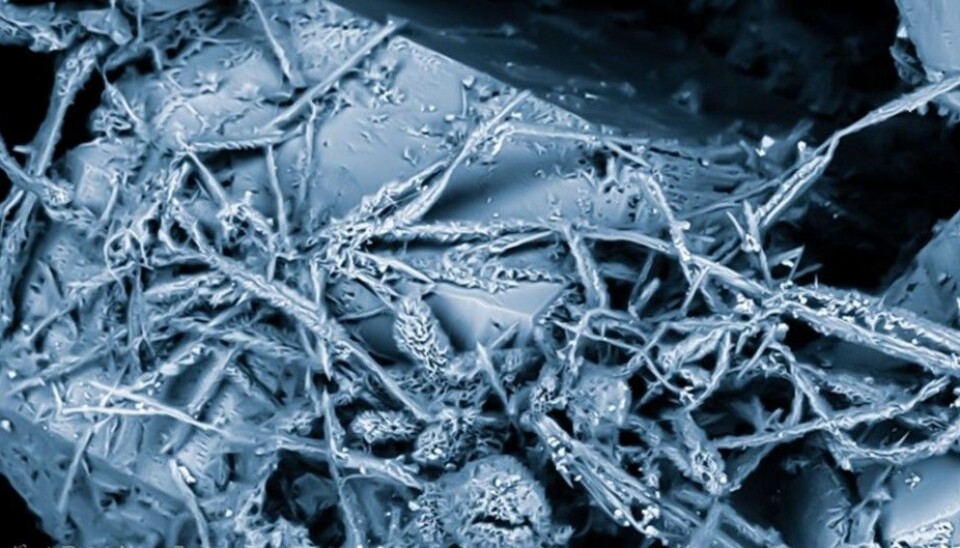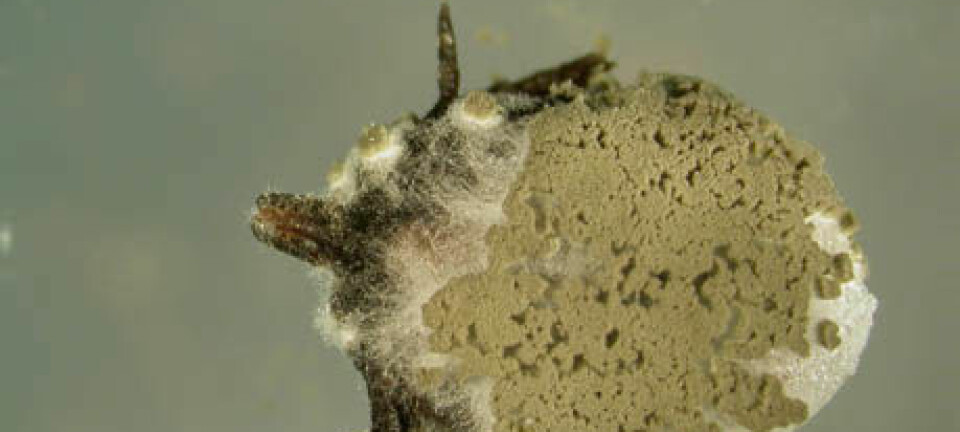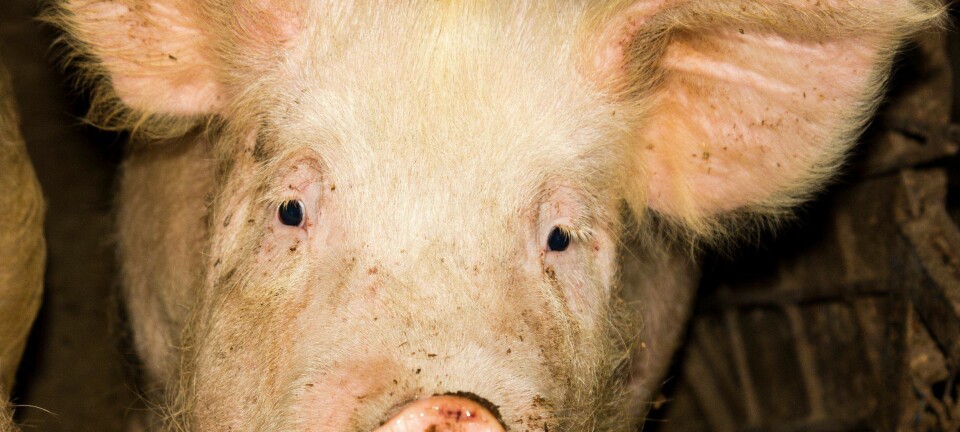
Fungi found 740 metres deep in Swedish bedrock
Deep continental bedrocks contain no oxygen and few nutrients, but there are still signs of life.
Swedish scientists have found fossil fungi in a drill core brought up from the depths.
Researcher Henrik Drake noticed that something was hiding in a tiny fracture in the cylinder of granite from 740 metres down.
“The hollow space was filled with mineral crystals. These were covered in fungal hypha that once grew on them,” says Drake.
“It was like looking at a society frozen in time,” he adds on the web pages of Sweden’s Linnaeus University.
Extreme forms of life
Scientists have been learning more and more in recent years about living organisms on our planet that have a range far beyond what we see in the green belt and the blue waters of the Earth’s surface.
Much seems to be living right beneath our feet – in an environment called the deep biosphere, one of the least understood ecosystems.
This appears to reach several kilometres down into the depths.
Such organisms are often lumped into a group called extremophiles because they have had to adapt to extreme conditions.
First of its kind
Scientists have a lot to learn about extremophiles but they can provide clues into how life started up on our planet and managed to evolve through the billions of years.
Most of the knowledge about such primitive forms of life has been about bacteria. More complex forms, such as fungi, have been overlooked.
The Swedish discovery of fungi 740 metres down though the bedrock below Oskarshamn in Southern Sweden is the first of its kind so deep in the crystalline continental crust, consisting of igneous rock like granite.
The finding reveals a relationship between fungi and sulphate reducing bacteria in a struggle to survive and confirms a hypothesis that researchers have been considering for a while.
Life on other planets?
“Our detailed analyses clearly show that this is a fungus that lived in anaerobic – oxygen free – environment,” says Drake.
The analyses reveal that several microbiological processes have occurred in the miniscule cracks deep down. Methane has been consumed and large amounts of sulphates have been reduced.
Sulphate reducing bacteria have been previously traced back to rock that is 3.5 billion years old.
Although the Swedish scientists have not been able to date the fungal fossil there are indications pointing back tens of millions of years.
The Swedish discovery might also provide clues toward prospective life forms on other planets or moons, where living organisms cannot survive the intense radiation found on the surface.
Discoveries of extremophiles in new environments on Earth widen hopes of such types of life existing beneath the surface of other bodies in our solar system.
-------------------------------------
Read the Norwegian version of this article at forskning.no
Translated by: Glenn Ostling





